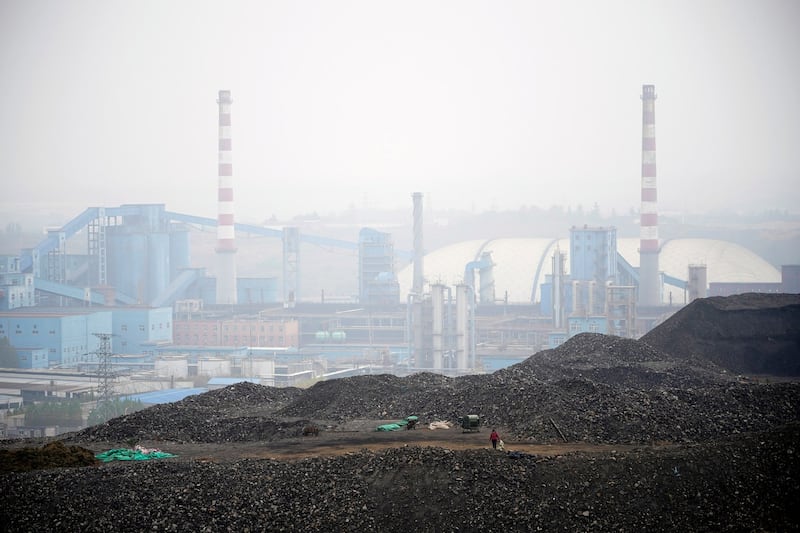Mining is one of the top drivers of deforestation globally, with up to one-third of the world’s forest ecosystems affected by its indirect impact, a new environmental report said.
China is the biggest driver of forest destruction through mining for raw materials, with about 18% of mining-related global forest destruction attributable to it, according to " Extracted Forests," prepared by the Vienna University of Economics and Business, WWF Germany and other organizations, released this month.
The European Union came second with 14%, and the United States stood third with 12%.
The report said gold contributes 33% and coal another 24% to the total demand-driven mining-related deforestation in China, which also has the largest bauxite deforestation footprint at 13%.
“Mining is currently considered to be the fourth largest driver of deforestation. However, this statistic only considers the direct impacts of mining,” Tobias Kind-Rieper, the head of mining and metals research for WWF Germany, said in the report.
Apart from excavation pits, large swathes of forest are cleared for access roads and workers’ settlements, as mining’s role in deforestation increases significantly considering its indirect impacts with such infrastructure development, as well as other related issues like water and soil contamination and illegal logging.
The report said up to 33% of the world’s forests may be affected by these indirect impacts of mining, as “the indirect impacts of mining on forests are often not only greater than direct impacts, but can also be more extensive.”

The report, released on April 18, said mineral extraction has doubled since 2000 and is accelerating at an “alarming” rate.
Forest loss and degradation can occur within a 70 kilometer (43 mile) radius of the mining activity itself, in addition to effects on biodiversity, the report said, adding that 77% of all mines exist within a 50 kilometer (31 mile) radius of key biodiversity areas.
“Metals are important for the development of human civilization and the life we live today. But the footprint left by the extraction of these commodities has a heavy toll on ecosystems,” Kind-Rieper said in a separate statement.
According to the Global Forest Watch 2022 report, tree cover worldwide decreased by 11% between 2011 and 2021, blamed mainly on human-driven deforestation, including agriculture, infrastructure, urban expansion, and mining.
Demand by just six countries, often located far from the mines, is responsible for more than half of mining-related deforestation, the report said, adding the resource demand is primarily concentrated in developed Global North nations and emerging economies in Asia, though mining was destroying the forests mainly in the Global South.
Indonesia and Myanmar in top 10
Some 84% of the deforestation for the extraction of raw materials in the last 20 years took place in just 10 countries, the report said.
Indonesia led the chart with 3,537 square kilometers (1,366 square miles) being destroyed for mining purposes, equivalent to 43,914 soccer pitches and more than double its nearest competitor Brazil.
The report said 61.5% of the deforestation occurred after 2010, with 38% between 2011 to 2015. The rates have slowed down since 2018, it said.
In Myanmar, the ninth highest in the list of mining-related deforestation, 529 square kilometers (204 square miles) of forest were destroyed for mining between 2001 and 2020.
The report said that most of the mining-related deforestation in Indonesia was due to coal, accounting for 1,924 square kilometers (743 square miles) of forest cover being lost between 2000 and 2019. That accounts for 57% of the total global forest area lost due to the expansion of coal mining.
The EU’s global mining deforestation footprint was highest in Indonesia (20%), mainly due to coal extraction.
Coal and gold caused the most significant destruction, with 71% of all global deforestation directly caused by mining, which can be traced back to these two raw materials, resulting in an estimated 6,877 square kilometers (2,655 square miles) of forest loss over the last two decades.
Some negative consequences for wildlife and ecosystems due to mining-related deforestation include the drastic decrease in Indochinese tigers in the Greater Mekong region. Experts say this is due primarily to habitat fragmentation caused by infrastructure development.
The WWF report said tropical rainforests suffered the most damage as more than one-third of the mining-related deforestation in the last 20 years occurred in just the last five years, which is “particularly worrying” for biodiversity conservation and climate change mitigation efforts.
“The dimensions of the forest destruction caused by global mining are alarming,” Stefan Giljum, Professor of Ecological Economics at the Vienna University of Economics and Business, said in a statement.
“The loss, particularly of rainforests, has accelerated rapidly due to the growing demand for raw materials. The main responsibility for this lies with our unsustainable production and consumption patterns.”
In many such countries, protected areas have been downgraded and downsized to allow for more mining, which the WWF report called a “worrying trend.”
According to Conservation International, such downgrading and downsizing have impacted 130 million hectares (321.2 million acres) of protected land in nearly 70 countries, including Cambodia, which downgraded about a dozen protected areas, and Indonesia that downsized 19 places.
The WWF report called for increased funding for research into the indirect impacts of mining-related deforestation and for environmental impact assessments (EIAs) ahead of the start of the mining project to account for such indirect factors.
“China, the EU and USA must take concrete steps towards bringing down overall demand for mineral products and set targets for the reduction of primary mineral commodities across all economic policies and strategies,” the report said.
Edited by Mike Firn.
